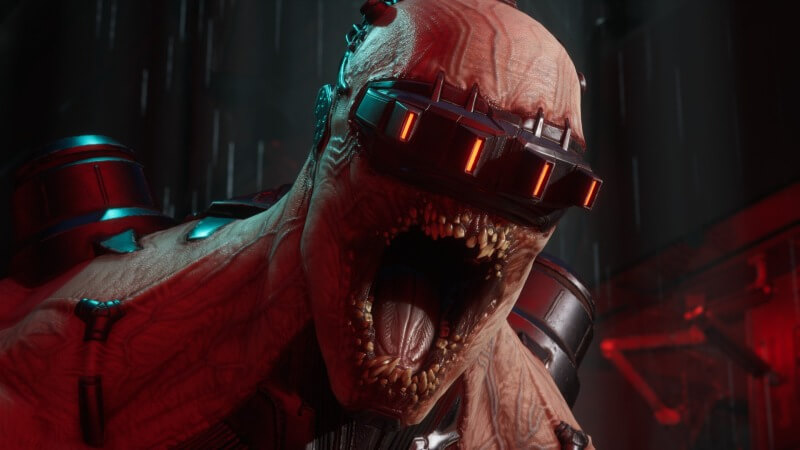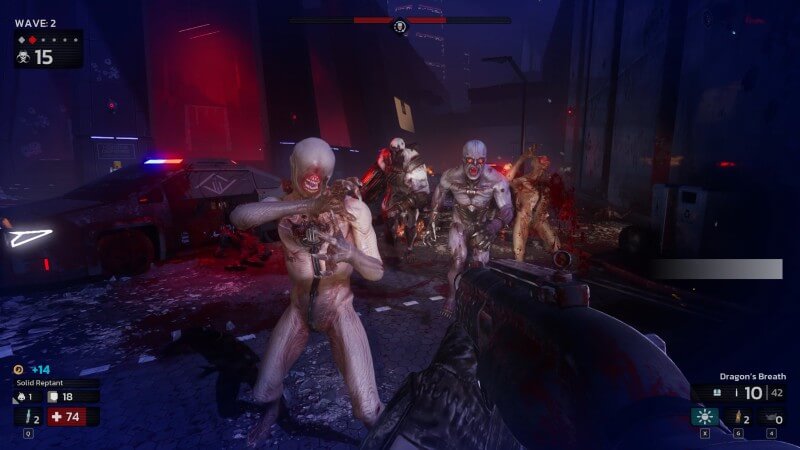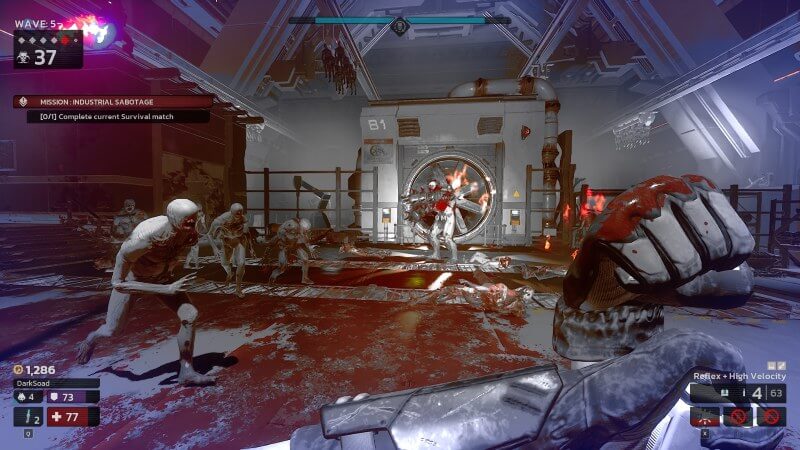Killing Floor 3 Is a Shooter By the Numbers

The identity crisis of Killing Floor 3 was evident from the very first reveal trailer back in 2023. It shows a humanoid sliced open and being surgically intervened against its will to become yet another copy of a Fleshpound, one of the special enemies in the zombie-killing franchise. Bright red neon lights replace its eyes and chest, and most of its body is now mechanical. It’s been programmed to do one thing and one thing only. Fail at it, and the next copy on the factory line will come around.
Killing Floor has been around for 20 years now, first appearing as a mod for Unreal Tournament 2004. The premise is one you’ve heard a dozen times: there are zombies to kill (sorry, zombie-like specimens called ZEDs), and some of them have different capabilities. The Scrake uses a chainsaw, while the Siren screams so loud that her sound waves destroy grenades in mid-air. Unlike the Left 4 Dead duology, the Killing Floor games center around surviving enemy waves to get cash and purchase better weaponry right until you got to the final boss.
I played 2009’s retail version of Killing Floor for hundreds of hours. The option for dedicated servers led to a surprising number of local sessions hosted at all times. Eventually, this led me to a group of people who played consistently, and I joined in. Again, the premise is nothing to drive home, but Killing Floor didn’t try to be anything more than that. Instead, it stood out for being gritty and vicious, both in its violence and the impact weapons have on ZEDs, and in the overall ambiance of each map, resembling the spirit of a B-horror movie. The soundtrack also played a part in this, surprising my young self with how heavy it was, with a myriad of guttural screams and a snare drum that sounded like somebody hitting a massive can with a monkey wrench.
But the sequel didn’t follow suit, instead putting the first nail in the coffin for that initial vision. Killing Floor 2, released in 2016, embraced the modernity of the past decade by pushing for better tech in the visual sense, but also in a way that veered from the concept of its predecessor. Instead of leaning on the B-horror side of the series, it went the other way, betting on the loose lore snippets about a corporation running experiments on humans and later creating clones. It turned out to be more about labs with future tech rather than old farmhouses where it was easy to imagine the stench of bodies in a state of decay. This was reinforced by some of the weapon and enemy additions, including straight-out robots.

When talking about Killing Floor 3, developer Tripwire Interactive described it as a “direct sequel” to the first game, carrying its “darker, grittier tone.” But as both the reveal trailer and equally short video snippets showed over time, the tone of the presentation was closer to the likes of Doom Eternal (up to and including a Glory Kill equivalent). Moreover, Killing Floor 3 doubles down on the service aspect of its predecessor, which came out during a weird in-between phase of the industry. You could still host and find dedicated servers, but the adoption of industry trends like microtransactions via crates and keys was already set in place. Now, the third installment is a full-on live service game with a premium currency and battle passes.
The history lesson above is important to understand just how much Killing Floor 3 seems designed to be a fleeting experience, allowed only to exist for as long as the lights are on. Its life is dictated by seasons and live servers, rather than allowing players to create their own sessions at their own pace. Tripwire has made every possible effort to remind you that it’s no longer the early 2000s, nor the 2010s. Now, the blueprint of a shooter—a live service shooter—is seemingly easy to mimic, produce, and distribute.
-

-

-

-

-

-

-

-

-

-

-

-

-

-

-

-

-

-

-

-

-

-

-

-

-

-

-

-

-

-

-

-

-

-

-

-

-

-

-

-









































